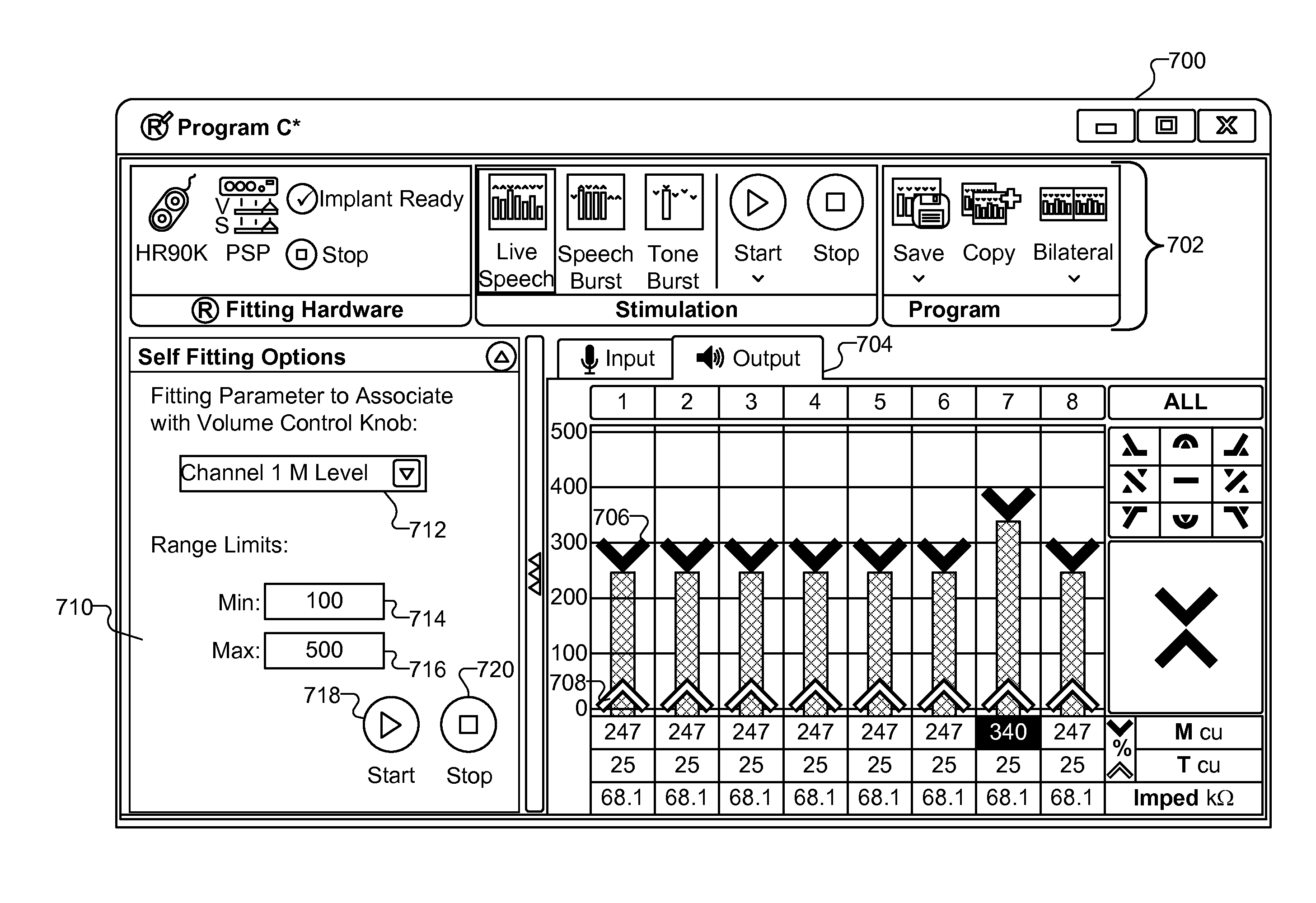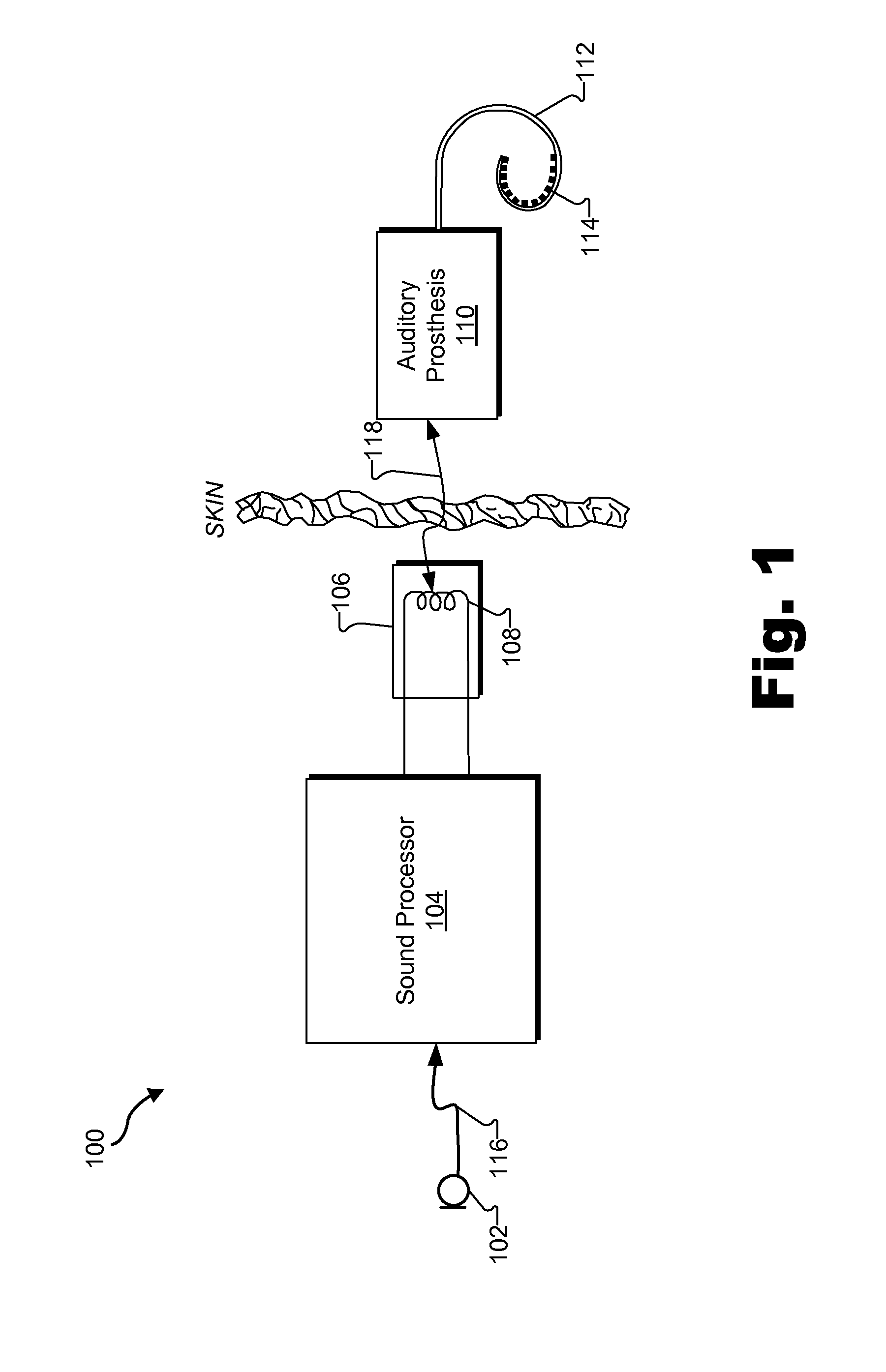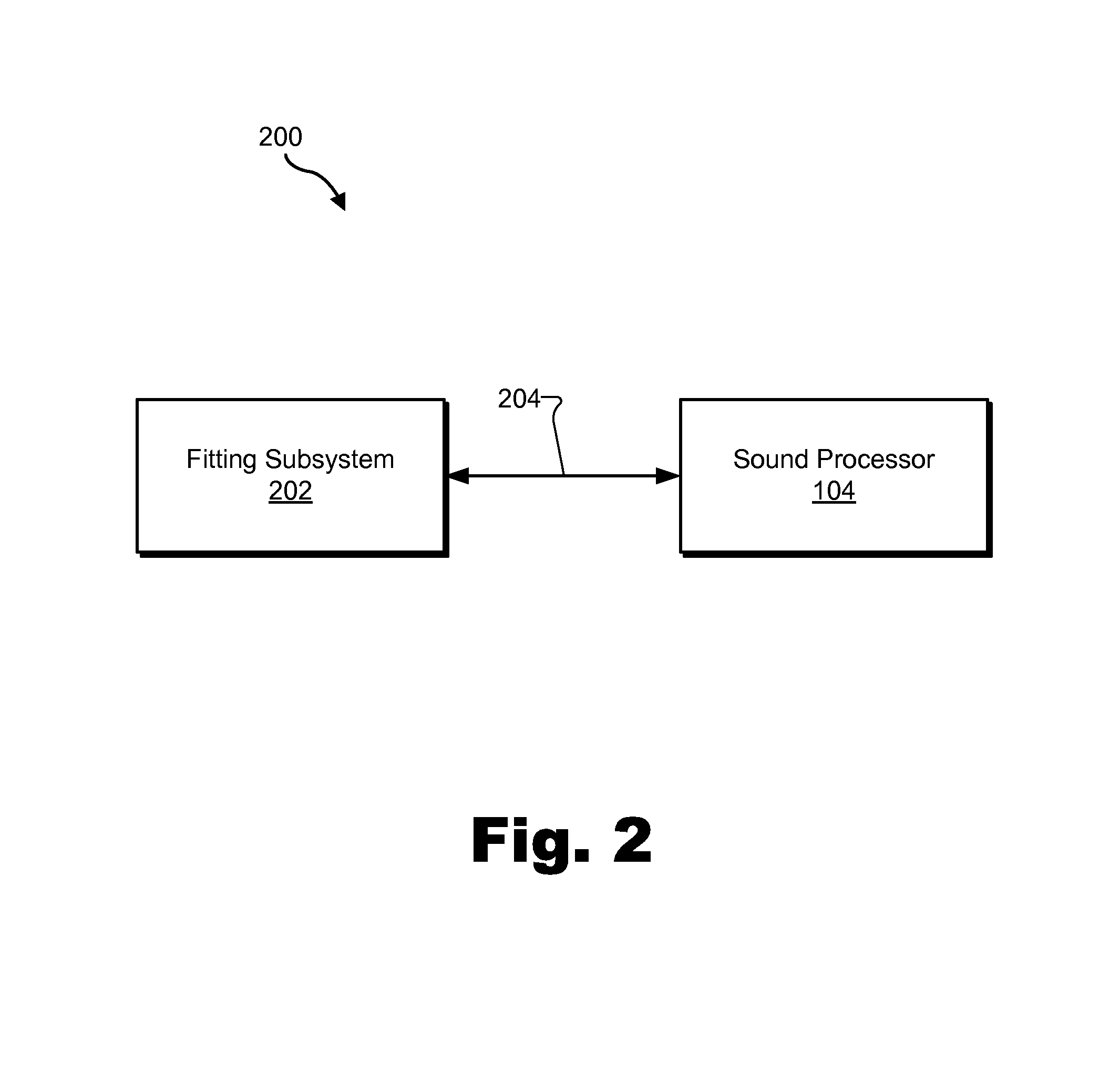Methods and systems for facilitating adjustment of one or more fitting parameters by an auditory prosthesis patient
a technology for auditory prostheses and patients, applied in the field of methods and systems for facilitating adjustment of one or more fitting parameters by auditory prostheses patients, can solve problems such as conductive hearing loss, impeded normal mechanical pathways for sound to reach the hair cells in the cochlea, and impeded sound pathways
- Summary
- Abstract
- Description
- Claims
- Application Information
AI Technical Summary
Benefits of technology
Problems solved by technology
Method used
Image
Examples
Embodiment Construction
[0021]Methods and systems for facilitating adjustment of one or more fitting parameters by an auditory prosthesis patient are described herein. As described in more detail below, a fitting subsystem may be communicatively coupled to a sound processor and configured to receive user input representative of a selection of a fitting parameter. In response to the user input, the fitting subsystem may associate the fitting parameter with a physical input mechanism that is a part of the sound processor (or, in some examples, part of a clinician's programming interface device) and dynamically adjust a value of the fitting parameter in response to actuation by a user of the physical input mechanism.
[0022]To illustrate, an audiologist may utilize a fitting subsystem (e.g., a fitting station or computer) to adjust “most-comfortable level” (or “M level”) associated with an auditory prosthesis system (e.g., a cochlear implant system) used by a patient. As used herein, an M level represents a sti...
PUM
 Login to View More
Login to View More Abstract
Description
Claims
Application Information
 Login to View More
Login to View More - R&D
- Intellectual Property
- Life Sciences
- Materials
- Tech Scout
- Unparalleled Data Quality
- Higher Quality Content
- 60% Fewer Hallucinations
Browse by: Latest US Patents, China's latest patents, Technical Efficacy Thesaurus, Application Domain, Technology Topic, Popular Technical Reports.
© 2025 PatSnap. All rights reserved.Legal|Privacy policy|Modern Slavery Act Transparency Statement|Sitemap|About US| Contact US: help@patsnap.com



